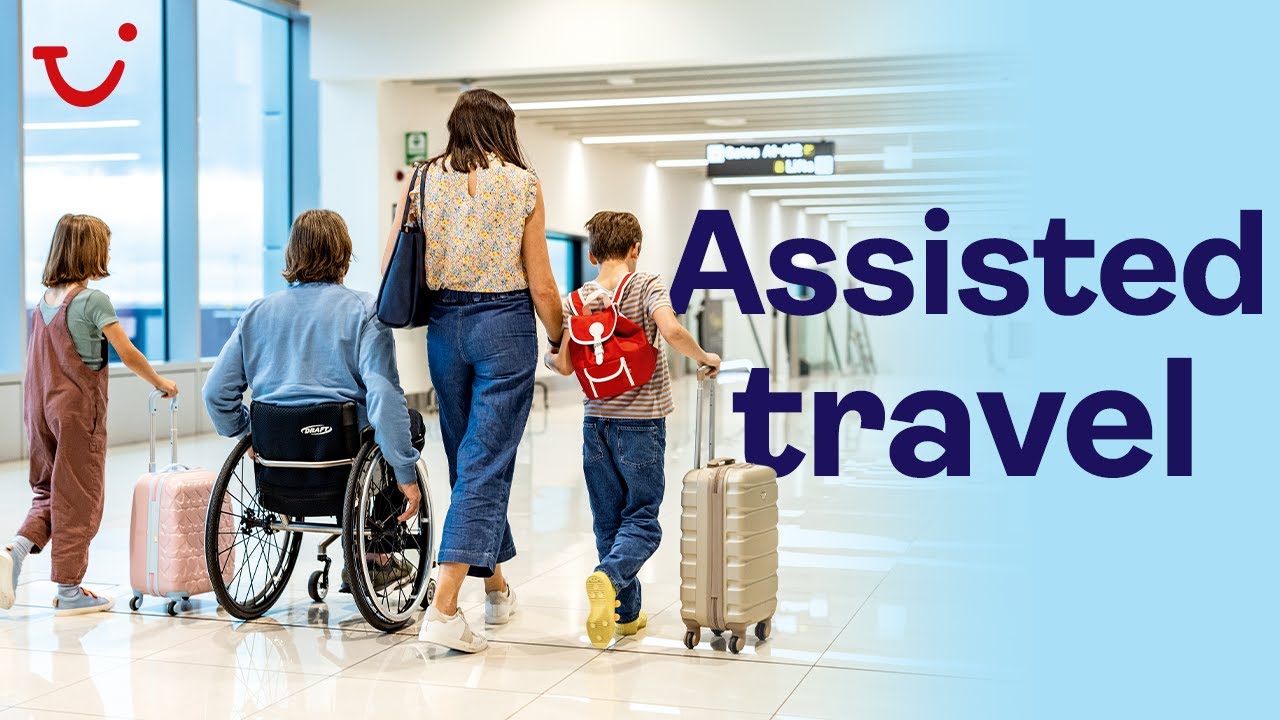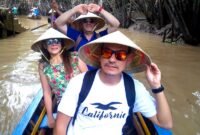Assisted travel for elderly individuals is gaining significant attention as the global population ages. This guide explores the diverse range of services designed to make travel accessible, safe, and enjoyable for older adults. We will delve into various transportation options, accommodation choices, and guided tour services tailored to meet the unique needs and preferences of senior travelers. Understanding the accessibility challenges and safety considerations involved is paramount, as is appreciating the emotional and social benefits that travel can bring to this demographic. This exploration will encompass technological advancements that enhance accessibility and safety, alongside an analysis of cost and value considerations.
From exploring the different types of assisted travel services available, including transportation, accommodation, and guided tours, to examining the crucial aspects of accessibility, safety, and cost-effectiveness, we aim to provide a holistic understanding of this growing sector. We’ll also highlight the role of technology in enhancing the travel experience for the elderly and discuss the broader emotional and social implications of travel for this population segment. The goal is to empower both elderly travelers and their families with the knowledge they need to make informed decisions and plan enriching travel experiences.
Types of Assisted Travel for the Elderly
Planning a trip for elderly loved ones or oneself requires careful consideration of specific needs and preferences. Assisted travel services are designed to address these, ensuring a safe, comfortable, and enjoyable experience. This section details the various types of assisted travel services available, their features, and examples of providers.
Transportation Services
Reliable and accessible transportation is crucial for elderly travelers. This includes various options designed to cater to different mobility levels and preferences. Services range from private car services with wheelchair accessibility to specialized airport assistance and even escorted group travel using adapted vehicles. The key benefit is reduced stress and increased safety, especially for those with limited mobility.
| Service Type | Key Features | Benefits for Elderly Travelers | Example Providers |
|---|---|---|---|
| Private Car Service (Wheelchair Accessible) | Door-to-door service, wheelchair ramps/lifts, experienced drivers | Convenience, safety, comfort, reduced physical strain | Many local companies offer this service; research local options based on destination. |
| Airport Assistance | Wheelchair assistance, priority boarding, baggage handling | Reduces stress and physical exertion at airports | Most major airports offer this service through their respective airlines or third-party providers. |
| Adapted Group Travel | Transportation in vehicles modified for wheelchair users or those with limited mobility, escorted travel | Companionship, assistance, reduced logistical burden | Specialized tour operators focusing on accessible travel. Research based on desired destination. |
Accommodation Services
Choosing appropriate accommodation is vital for a comfortable and safe trip. Elderly travelers may require specific features like single-level rooms, grab bars in bathrooms, and easy access to common areas. Many hotels and resorts now offer adapted rooms, while some specialize in senior-friendly accommodations. The benefits include improved safety, comfort, and convenience.
| Service Type | Key Features | Benefits for Elderly Travelers | Example Providers |
|---|---|---|---|
| Senior-Friendly Hotels | Adapted rooms, accessible amenities, emergency call systems | Enhanced safety, comfort, and convenience | Many hotel chains offer accessible rooms; search hotel websites filtering by accessibility features. |
| Retirement Community Stays | On-site medical assistance, social activities, accessible facilities | Comprehensive support, social interaction, medical peace of mind | Numerous retirement communities offer short-term stays or vacation packages. |
| Accessible Vacation Rentals | Wheelchair ramps, roll-in showers, wide doorways | Greater independence and flexibility | Airbnb and VRBO offer filtering options for accessible properties. |
Guided Tours and Activities
Guided tours and activities can enhance the travel experience, offering companionship and assistance. These services often cater to specific interests and physical abilities, ensuring everyone can participate. Slower paces, shorter distances, and well-planned itineraries are common features. Benefits include social interaction, enriched experience, and reduced stress of planning.
| Service Type | Key Features | Benefits for Elderly Travelers | Example Providers |
|---|---|---|---|
| Accessible Guided Tours | Slower pace, shorter distances, accessible transportation, assistance with activities | Enjoyable experience, reduced physical strain, social interaction | Many tour operators offer accessible tours; research based on location and interests. |
| Senior-Specific Activities | Gentle walks, relaxed sightseeing, low-impact excursions | Tailored experiences to physical abilities and interests | Local tour operators often provide specialized programs for seniors. |
| Companion Services | Personalized assistance, companionship, help with activities of daily living | Increased safety, independence, and enjoyment | Several agencies offer companion services for travelers. |
Accessibility Considerations in Assisted Travel
Planning accessible travel for elderly individuals requires careful consideration of their diverse needs and limitations. Successfully navigating the complexities of travel, while accommodating physical, sensory, and cognitive challenges, is paramount to ensuring a positive and enriching experience. This section details the key accessibility features and best practices to create truly inclusive travel arrangements.
Accessibility Challenges Faced by Elderly Travelers
Elderly travelers present a wide spectrum of mobility levels, each presenting unique accessibility challenges. Those with limited mobility may struggle with navigating uneven terrain, stairs, and long distances. Individuals with visual impairments may need assistance with wayfinding and reading information, while those with hearing impairments may require visual cues or alternative communication methods. Cognitive impairments can also impact the ability to understand instructions, plan itineraries, or handle unexpected situations. For example, an elderly person with arthritis might find it difficult to use standard restroom facilities or navigate crowded airports, while someone with dementia may become easily disoriented in unfamiliar environments. These diverse challenges necessitate a tailored approach to accessibility planning.
Key Accessibility Features in Assisted Travel Services
All assisted travel services should incorporate key accessibility features to cater to a diverse range of needs. These include, but are not limited to, wheelchair-accessible transportation, step-free access to accommodations and attractions, accessible restrooms, clear and concise signage (including Braille and large print options), availability of assistive listening devices, and well-trained staff capable of providing appropriate assistance. Furthermore, readily available information in multiple formats (audio, large print, Braille) concerning itineraries, emergency procedures, and local services are crucial. Clear communication channels should also be established to handle any unexpected needs or issues promptly.
Examples of Accessible Accommodations, Transportation, and Tours
Accessible accommodations might feature roll-in showers, grab bars in bathrooms, ramps, and wider doorways. Transportation options could include wheelchair-accessible taxis, buses, and trains with designated spaces and ramps. Tours should be designed with shorter walking distances, frequent rest stops, and accessible routes. For instance, a cruise line might offer accessible cabins with wider doors and roll-in showers, while a tour operator might arrange for a wheelchair-accessible van for excursions. A hotel could provide visual alert systems for those with hearing impairments and large-print menus for those with visual impairments.
Best Practices for Ensuring Accessible Travel Experiences
Prior to travel, thorough planning is essential. This involves confirming accessibility features at all locations and booking accessible transportation and accommodations in advance. It is crucial to understand the specific needs of the elderly traveler and tailor the itinerary accordingly.
- Visual Impairments: Provide large-print materials, audio descriptions, tactile maps, and assistance with navigation.
- Auditory Impairments: Utilize visual aids, written communication, captioning, and assistive listening devices.
- Mobility Impairments: Choose accommodations and transportation with wheelchair access, ramps, and elevators. Ensure routes are free from obstacles and provide assistance with baggage handling and transfers.
- Cognitive Impairments: Provide clear and concise instructions, visual cues, and frequent reminders. Consider simpler itineraries and allow for flexible scheduling.
- General Best Practices: Always confirm accessibility features before booking, provide ample time for transfers and activities, offer assistance without being intrusive, and ensure clear communication channels are established.
Safety and Security Measures in Assisted Travel
Ensuring the safety and well-being of elderly travelers is paramount in assisted travel. The unique vulnerabilities of this demographic necessitate proactive measures to mitigate potential risks and provide peace of mind throughout their journey. This section details the safety protocols and security measures implemented by reputable providers, along with advice for travelers themselves.
Elderly travelers face a heightened risk of accidents, medical emergencies, and instances of theft or fraud due to factors such as decreased mobility, potential cognitive impairment, and increased susceptibility to illness. To address these concerns, comprehensive safety measures are integrated into every aspect of assisted travel, from pre-trip planning to on-site support and post-trip follow-up.
Role of Trained Personnel in Ensuring Safety
Trained personnel play a crucial role in mitigating risks associated with assisted travel for the elderly. These professionals, often including nurses, paramedics, and experienced travel companions, provide continuous support and monitoring. Their responsibilities encompass everything from assisting with mobility and medication management to responding to medical emergencies and providing emotional support. The presence of trained personnel offers a significant safety net, enabling swift and effective responses to unexpected events. Their expertise ensures that elderly travelers receive the appropriate care and attention, reducing the likelihood of incidents and improving overall safety.
Safety Protocols and Emergency Procedures
Reputable assisted travel providers adhere to strict safety protocols and emergency procedures. These protocols typically include 24/7 emergency contact availability, detailed travel itineraries shared with family members, comprehensive travel insurance covering medical emergencies and evacuations, and readily accessible medical kits. In the event of a medical emergency, providers often have established relationships with local medical facilities and arrange for immediate transport and treatment. Furthermore, pre-trip assessments of the traveler’s health status and mobility are standard practice to tailor the travel arrangements to individual needs and minimize potential risks. For instance, a provider might arrange for accessible transportation, pre-book wheelchair assistance at airports, or ensure accommodations are suitable for the traveler’s physical capabilities. Detailed emergency plans, including contact information for local emergency services and designated personnel, are readily available to both the traveler and their family.
Safety Tips for Elderly Travelers
Preparing for a trip involves proactive measures to enhance personal safety. It is advisable to keep a detailed list of emergency contacts readily available, including family members, doctors, and the assisted travel provider. Furthermore, carrying a copy of any relevant medical information, such as medication lists and allergies, is essential. Travelers should inform their bank and phone provider of their travel plans to avoid any issues with accessing funds or communication services. In terms of personal belongings, it’s crucial to keep valuables secure, utilizing safety devices like money belts or travel wallets. Finally, maintaining open communication with family or friends throughout the trip ensures timely assistance if needed.
Technological Advancements in Assisted Travel
Technological advancements are revolutionizing assisted travel for the elderly, enhancing both accessibility and safety. These innovations are not only improving the travel experience but also empowering older adults to maintain their independence and explore the world more confidently. This section will explore several key technological advancements and their impact on the future of senior travel.
Several key areas are witnessing significant technological progress, including improved navigation systems, advanced mobility aids, and enhanced communication tools. These advancements are transforming the challenges of travel into opportunities for greater ease and comfort.
GPS Tracking Devices and Smart Mobility Aids
GPS tracking devices offer peace of mind for both elderly travelers and their families. These devices, often integrated into smartphones or wearable technology, provide real-time location information, allowing caregivers to monitor the traveler’s whereabouts and ensure their safety. Examples include personal GPS trackers that can be attached to a bag or worn as a pendant, sending alerts if the wearer strays from a predetermined area or experiences a fall. Smart mobility aids, such as motorized wheelchairs and walkers equipped with GPS and obstacle detection, provide increased independence and reduce the risk of accidents. For instance, a smart wheelchair might incorporate sensors to avoid collisions with obstacles and provide haptic feedback to the user, guiding them safely through crowded environments.
Smartphones and Apps for Assisted Travel
Smartphones, coupled with specialized travel apps, are transforming the assisted travel experience. These apps can provide real-time information on transportation schedules, accessibility features at various locations, and emergency contact information. Some apps even offer translation services, simplifying communication in foreign countries. Furthermore, many apps offer features like medication reminders and emergency call buttons, enhancing the safety and well-being of elderly travelers. For example, an app might provide step-by-step navigation with voice guidance, highlighting accessible routes and identifying potential hazards along the way.
Impact of Technology on the Future of Assisted Travel
The continued development and integration of these technologies promise a future where assisted travel is more accessible, safer, and more enjoyable for elderly individuals. We can anticipate even more sophisticated assistive devices, seamless integration of various technologies, and personalized travel experiences tailored to the specific needs and preferences of each traveler. The increased availability of affordable and user-friendly technology will further empower older adults to travel independently and confidently. For example, imagine a future where smart homes seamlessly coordinate with travel plans, automatically adjusting lighting and temperature upon arrival, and providing reminders about medication and appointments.
User Experience of a Smartcane
The smartcane, a technologically enhanced walking stick, offers a compelling example of assistive technology for elderly travelers. It typically incorporates features such as GPS tracking, fall detection, and haptic feedback to guide the user. The benefits include increased safety through fall detection and location tracking, improved mobility through haptic feedback for obstacle avoidance, and enhanced independence for the user. However, limitations include potential battery life issues, the weight and bulkiness of the device, and the learning curve associated with using the various features. Despite these limitations, the overall user experience is often positive, with many users reporting increased confidence and independence in their daily activities and travels. The improved safety and reduced risk of falls significantly outweigh the drawbacks for many elderly individuals.
Wrap-Up
Ultimately, assisted travel for the elderly offers a gateway to continued exploration, social connection, and personal enrichment. By understanding the various services available, prioritizing accessibility and safety, and recognizing the emotional benefits of travel, we can ensure that older adults can continue to experience the joy and fulfillment that travel provides. The future of assisted travel promises further innovation in technology and service design, promising even more accessible and enjoyable experiences for senior travelers in the years to come. Careful planning and informed choices can lead to memorable and enriching journeys for all.




